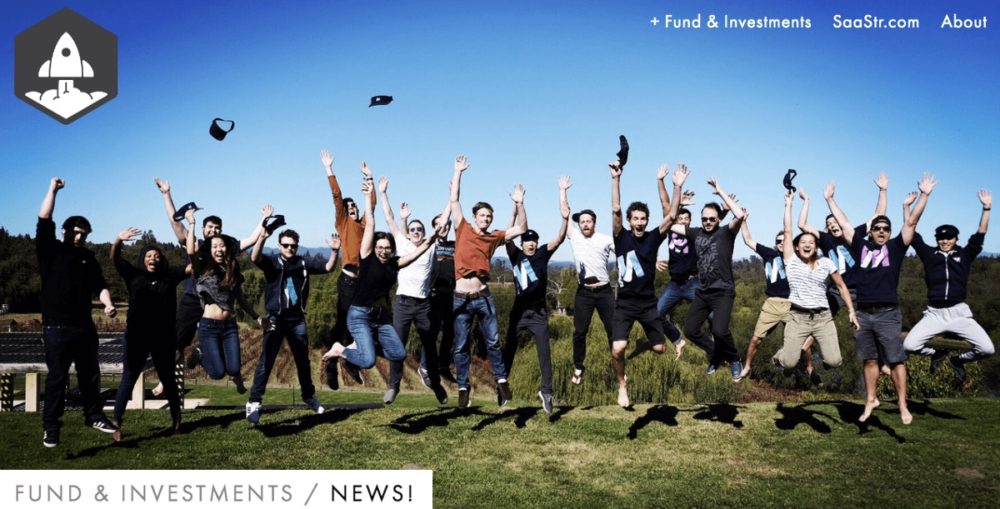Dear SaaStr: What is the Process You Follow When Investing in an Up-and-Coming Startup?
Let me give my process at least:
First, I try somehow to identify before a first meeting if there is a >=2.5% chance of investing. This is perhaps the most non-obvious part. There are too many startups out there that want to meet, have coffee, do a Zoom, etc. You simply cannot meet with all of them. The single most important thing you can do is protect your “slots” so that you meet with startups there is at least some chance you might invest in. You need to challenge your mindset so you don’t pattern match or get into a rut, but every meeting you take with a startup there is truly a 0% chance you’d invest in, is one less meeting you’ll take with one that could return the fund.
How do you determine that?
- A strong warm referral (“this is the best startup I’ve met this year”) is a clear Must Meet. But weak warm referrals are almost worse than nothing. They create an obligation to meet without a desire to.
- A great cold outbound email can work well, too, if the metrics and pitch make you lean forward at a keyboard.
- And a “let’s get together” from a great founder you’ve known for a while is always an automatic meet. There are always a bunch of founders you know that if the stars align, you’d definitely want to back.
You have to take some risks and do some meetings you think there is 0% chance you’d fund. But you can’t do too many. Or they will entirely crowd out your calendar.
But all you have to do as a founder is get above 2.5% or so. Then I definitely want to meet. So maybe don’t do things that decrease your odds, e.g. not meet in person (a phone ‘meeting’ is an automatic < 2.5%), sending a “teaser” deck without data (ditto), creating the sense you just are “taking meetings” but don’t have particular interest in me, etc.
Second, I then look for reasons not to invest. This may sound backward, but again, there are too many startups. There are too few great startups, but unfortunately, too many “merely good” and fairly good and almost good startups. 🙁 These are often amazing companies but cannot generate venture returns, unfortunately.
So next, it saves the most time to look at reasons not to invest. My top reasons:
- Founders that can’t see the future. I’m not smart enough to see the future of your industry. If you can’t explain where your product and company will be in 1, 2, and 5 years at least … that’s a Not a Good Fit.
- Growing too slowly. This isn’t always a pass, but the later stage you are, the bigger a deal it is. If it’s before $20k or $30k or so in MRR, and the raw ingredients are there, it may be fine. If you are at $1m in ARR or so and growing < 100% year-over-year, though, that’s almost an automatic Not a Good Fit. Realistically, 200% at $1m ARR is the minimum.
- No one great on the team. There have to be 2 great folks on the team.
- Tired of the market / space. Some spaces I just have fatigue in. But others won’t. Conversely, I’ve invested in spaces others thought were “played out” because I didn’t have fatigue (e.g., Algolia, Pipedrive, Talkdesk, RainforestQA, Logikcull, Automile as examples).
- Any inappropriate comments. Sexism, ageism, excessive hubris, an arrogant view of much larger competitors … best case, these suggest you won’t be able to build a great management team. I don’t expect early-stage founders to be polished, but offensive comments and perspectives are an automatic Not a Good Fit.
- Software that just isn’t good enough — even if traction is strong. If it’s early, of course, no one can expect every feature to be amazing. But something in the product has to be, even in the very early days. The competitive bar is just too high today to ship something that is a pure hack that evolves into something great within 24 months.
If any of the 6 “flags” are tripped, it’s a Not a Good Fit. No matter how appealing the investment is otherwise.
Ok, if it looks promising and the threshold reasons to Not Invest haven’t been tripped, what’s next?
At this point, it’s a 4-point test:
- Can the company potentially be a unicorn? If it’s easy, for sure, you have to squint. But can the company get to $100m+ ARR within 7 years from date of investment?
- Is the CEO someone I would work for? If so, not only will she be able to recruit a great team … but it’s something I’m willing to commit a share of my next decade toward helping.
- Do I believe? Deep down, do I believe it’s a winner — no matter what anyone else says?
- Does the burn rate + valuation make sense? If the burn rate is too high, I generally have to bow out. If you’ve raised too much too early, similarly, I often have to bow out. If the valuation is so high it’s structurally impossible, I have to bow out.
If the answer to all 4 of these criteria is Yes, usually I try to invest pretty quickly. And buy as many shares as I can.
(note: an updated SaaStr Classic answer)


